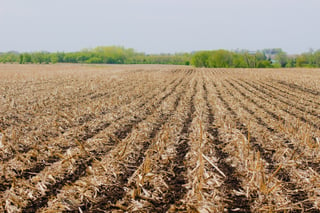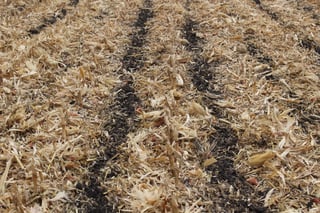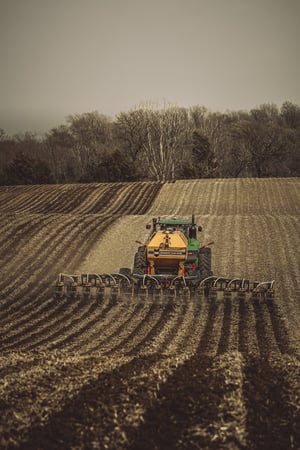Strip-Tillage in the Fall or Spring
Strip-Till in the Fall vs. the Spring
Many farmers wonder when the best time for strip tillage is. Sean Arthur, regional sales manager at ETS, shares the benefits of strip tillage in the fall and spring.
Sean first tries to understand their operation and the timing of their practices during harvest and the area they are farming. “As we get further north, it seems like combines tend to get chased out of the field by the snow nearing late fall,” says Sean. There is not always enough time to get the strips done. A conversation with someone up north will differ from somebody in more southern geography who will have a long window in the fall to apply their strips.
Sean states, “The time that we can work in the field will be a portion of what we talk about but also the goals of what customer is doing with their fertility program. If a farmer wants to put nitrogen on his strips, it will lead us toward strip tillage in the spring because of the options that we have to apply either a liquid Urea Ammonium Nitrate (UAN) product, dry urea, or anhydrous ammonia."
Spring strip-till can be more respectful to the field conditions. “The biggest black eyes that can happen in strip-till is when individuals make strips and conditions that are less than ideal,” said Sean.

You can’t wait for the field to be perfect all the time, but if you're going out when it’s too wet or cold, it can lead to not producing a nice strip that will give us some challenges throughout the rest of the season. “When you go out to a field that hasn’t been prepared yet for this upcoming season, try to be patient, giving yourself the best chance for success by going into good or favorable field conditions.” We want to give it an extra day to dry out to make a favorable strip to follow up with the planter.
For many growers doing the strip in the fall is their first choice. If the conditions don’t allow it or the weather turns, they can return and finish those acres in the spring.
Strip-till has flexibility, especially with SoilWarrior. Coulters can be a nice option to run in the fall to give you that nice residue mixing and get the soil cut up like we want, so we have a nice zone prepared for the following year. That same coulter setup will be great to run in the spring, giving us flexibility.

When making strips, some customers follow their SoilWarrior with the planter immediately on the same day. They’re out there planting directly into those strips, having much success when the conditions are good. Another option is to make a strip and allow it to lay for a few days. Come back with the planter, and there will be more flexibility.
We want to respect the moisture level that’s in the soil. “SoilWarrior coulters do a nice job opening things up and allowing it to be prepared for the planter,” said Sean. If a little residue moved over the strip during the winter, it doesn’t necessarily mean we need to make an additional pass across the field.
If the soil is warming up underneath the residue or in areas where it’s blown over, it can be managed with a planter. A nice set of zone cleaners or row cleaners on the planter can move that surface residue off to the side, allowing us to access the healthy strip that we created underneath.

When a significant amount of residue gets moved over, a farmer may be concerned about inconsistencies and soil temperatures in the area covered with the strip and exposed. This is an opportunity to freshen that strip up without going too deep. Clear the surface residence and work on the top couple of inches. This would be a great opportunity to put nitrogen on. If you have a liquid UAN or a dry, we could incorporate that with the spring freshening pass.
Don’t worry so much about the residue but more about the condition of the strips a field. If it’s a more inclined slope or a steeper pitch to your field or if you had a severe washout, that might justify it, but on the whole, economics probably don’t justify just taking it across the field unless there’s a greater purpose.
Comment